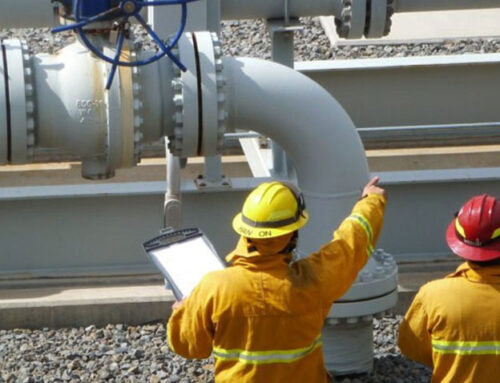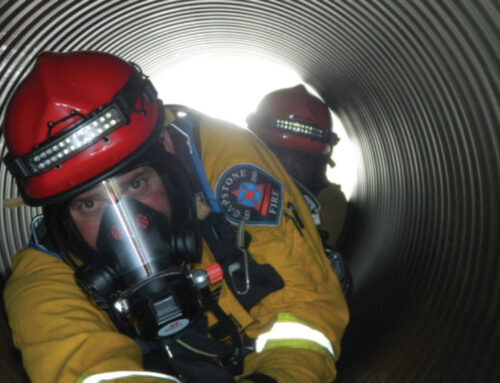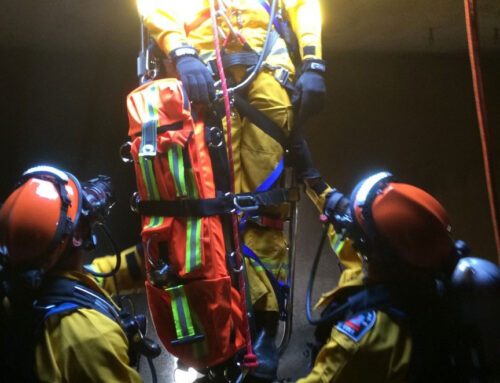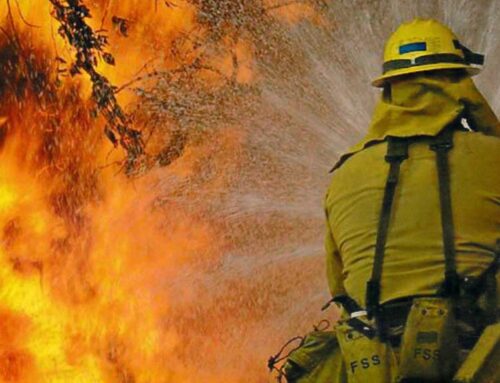The water and wastewater treatment field is not well known in the community. Few people think about what happens in order to get water to flow through their pipes or what happens once they flush the toilet. There’s a network of underground piping delivering water to and from houses, businesses, and other community locations.
In these processes, there are a variety of hazards related to the work it takes to clean water. For the water treatment process source water is taken from aquifers, wells, and surface water locations piped to the treatment process for further cleaning. The cleaning process for drinking water includes a filtration system, the addition of coagulant flocculants, and disinfection. After this process is complete the order is sent through a distribution system to the final destination.
In the wastewater system once waste is poured down the drain or the toilet flushed it moves through a series of piping to a collection station. The collection station will lift the water to a higher elevation where it can gravity feed down to the next collection station. Those collection stations are therefore called lift stations. After the wastewater leaves the stations it flows into a water treatment plant to receive further treatment before discharge into a receiving stream or is reclaim water.
Operators of the systems – collection system, distribution system, and treatment plant – are subject to a variety of hazards in order to do their jobs. Three of these hazards are directly related to fire rescue services:
- Permit required confined space entry
- Hydrogen sulfide exposure
- Methane gas exposure
Permit Required Confined Space
In the collection system, distribution system, and treatment plant process tanks there is a need to have a person enter for various purposes. These tanks can hold a person, have a limited means of egress and access, and were not meant for continuous human occupancy. That is the definition of a confined space to the Occupational Safety and Health Administration (OSHA). If there is a hazard related to the space it becomes permit required confined space.
In the collection and distribution systems there are atmospheric hazards, engulfment hazards, exposure to methane gas (which are explosives), and hydrogen sulfide gases. There have been cases in recent years when fire rescue is needed to save the utility worker or contractor from being overcome by gases in these systems.
Hydrogen Sulfide Exposure
Hydrogen Sulfide (H2S) is a gas heavier than air and present as a byproduct of decaying matter. In the wastewater collection system, there are many locations where hydrogen sulfide gases can accumulate. When there is a permit required confined space entry the operator must check the atmosphere for the presence of many gases including hydrogen sulfide.
Unfortunately, there are cases where either the city or county worker has needed rescue because of overexposure to hydrogen sulfide gases. In these cases a specialist must provide assistance to the city or county in order to rescue the fallen worker. Sadly, this rescue must take place rapidly or the worker will die.
Methane Gas Exposure
Accumulation of methane gas in the collection system can be explosive. Methane gases develop naturally in collection systems where there is little movement of air. Once the air and an ignition source come in contact with the methane gas a violent explosion happens. This explosion can cause immediate burns and or death for the operators exposed to this hazard. Prompt fire rescue services are needed to avoid increased liability to the community.
Methane gas is also a byproduct of sludge digestion, which is a process used to treat the settled solids in the treatment plant. Treated wastewater sludge can be used as fertilizer in the open market. It is a very good product enhancing growth in plants.
Anaerobic digestion is one process producing methane gas as a byproduct to stabilizing the settled solids. This gas is often used to heat the digester through recirculation piping or it is released into the atmosphere after going through a gas flare process.
Though the hazards related to the water/wastewater treatment process can be a source for stress, it is a necessary part of our modern society. It would be hard to imagine a day without clean drinking water or the ability to flush the toilet. Through the assistance of fire safety, standby rescue services, and specialized training hazards can be mitigated in these facilities.





